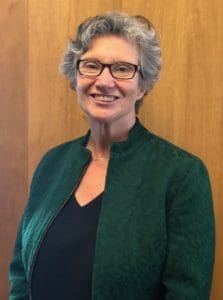
By Linda Jackson
AAI Program Director
“Home Alone” has a whole new meaning these days.
The movie about a boy left behind to fend for himself against the world was funny.
The COVID-19 reality about being home alone and fending for oneself against a raging world outside is not so funny.
We were already worried about social isolation before COVID-19 arrived with its rules about hand washing, masks, and six-foot separations. Older people in Marin were already in danger of social isolation due to living alone, debilitating health challenges, loss of a partner, loss of income with retirement, and/or living in neighborhoods far from neighbors and stores. The shelter-in-place rule halted meaningful engagements of volunteerism, outings with friends and neighbors, work needed to pay the rent, and opportunities to simply be in community. Caregivers and service workers are disproportionately affected as essential workers on the front line, worried about both their jobs, their clients and their families. The worst isolation for older adults has been experienced by those in long-term care and residential care facilities, closed up in their rooms for weeks on end.
While sheltering-in-place, I am watching myself slowly atrophying in physical, mental, and spiritual health. Health research has shown that isolation can lead to loneliness, depression, and suicide. Dementia experts say that lack of physical activity can lead to loss of muscle and mental acuity. Today, after five months of “home alone” with no respite in sight, I can now look forward to new health challenges when going back into the outside world: how to restore physical health, repair mental acuity, and bring back meaning to life.
One difference, this home alone situation is not just about 70,000 older people in Marin feeling lonely. Community-based organizations working with older adults have lost their volunteer bases. Groups have to search through online rabbit holes to find the right safety protocols for their activities (or find that they don’t exist yet). Local businesses are starved of customers. Public agencies are looking at frightening funding deficits.
So, let’s talk about what’s causing this “home alone” situation.
It’s August: with less than four percent of the global population, the U.S. accounts for more than 20 percent of COVID-19 deaths. The U.S. death rate from COVID-19 is similar to England, Italy, Spain and Sweden. It is higher than neighbors Canada and Mexico, and far higher than in Germany, Denmark, South Korea and Japan.
According to the New York Times, “Nationwide, 211,500 more people have died than usual from March 15 to Aug. 1, according to C.D.C. estimates, which adjust current death records to account for typical reporting lags. That number is 56,000 higher than the official count of coronavirus deaths for that period. Higher-than-normal death rates are now widespread across the country; only Alaska, Hawaii and West Virginia show numbers that look similar to recent years.”
Hundreds of thousands of Americans have died before their time. Older people have died disproportionately in greater numbers, and yes, before their time. It does not have to be this way.
There are successful universal programs of shelter, health, nutrition, and care in Asia, Europe, and Scandinavia where people live comfortably and well throughout their lives, including the last years. COVID-19 has made clear that it’s time for California and the US to come up with new systems for care that work for everyone, not just those who have the power and the money.
To that end, it’s time for the annual AAI Convening. I invite you to join me and others in the AAI network to move our work for equity in aging in Marin forward. Come to the 2020 AAI Annual Convening on Tuesday, September 16 in the afternoon, and Wednesday, September 17 in the morning. We’ll be on Zoom, so look for plenty of walk-around breaks, breakout sessions, and some music and exercise. We will have optional networking opportunities at lunch, coffee, and happy hour. Most importantly, there will be panels about advocacy, racial and aging justice, and a keynote panel about the California Master Plan on Aging.
As Kevin McCallister found out in the movie, being home alone in a house makes it really hard to fight the bad guys. But he did it. So will we, doing the work of the collective community good online. Sign up and join Marin’s only countywide gathering of people working in public agencies, the healthcare sector, and in community-based organizations. Together we will find the innovations and initiatives so that all older people in Marin have an affordable place to call home, care for mental and physical well-being, and sufficient food and companionship.
At one point in “Home Alone,” the danger passes. The family comes back, and all are safe again. During the COVID-19 version of the movie, we’re not there yet. But we will be.

